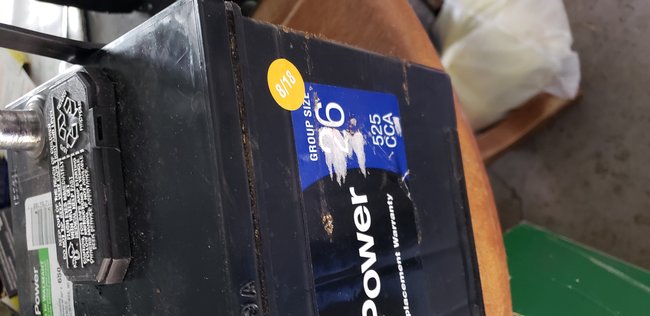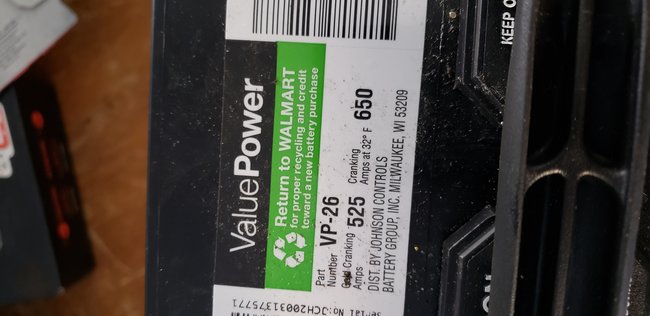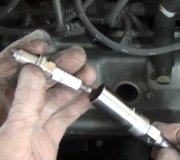There is a clinker in yer thinker. I have a suspicion your battery was not listed for your vehicle because it is considered a truck, not a car. Truck batteries are expected to bounce around more which can be expected to shorten their life span. Therefore, they often come with shorter warranties; typically only three years instead of the more common five years. I cannot emphasize enough, the battery is not causing the problem. You can put one in big enough to start the space shuttle, but that still will not stop the drain. Think of a small leak in a municipal water tower. Your answer to stop that leak is to put the tower on longer legs. What you need to do is address the leak, not the size of the tower, or its height. What you need to do is address the drain, (electrical leak), not the size of the battery. Once the drain is solved, you can put in a battery that's half of what you have now, and it will work fine.
Your friend should have told you to disconnect the battery's negative cable, not the positive one. Disconnecting either cable will stop any drain, but we always say to do the negative one because if you bump a metal hold-down bracket or any part of the body sheet metal with the wrench while it is in contact with the cable clamp, nothing will happen. You just go about your business. If you bump the wrench into something metal while it is touching the positive clamp, Fourth of July fireworks will take a back seat to what you will produce. If you are lucky, there will just be a lot of sparks. If you are as unlucky as one student who did this many years ago at school, the wrench will weld itself in place, become red-hot, and melt and bend under its own weight. Rather than take a chance on that, just take the negative cable off first, and always reconnect it last. When you are replacing a battery, once the negative cable is off, if you bump metal with the wrench on the positive cable, nothing exciting will happen.
Be aware too that you are going to have a low-idle speed problem every time you disconnect the battery. For everything else, the Engine Computer will rebuild what it lost in memory as soon as you start driving, without you even noticing. But "minimum throttle" needs to have certain conditions met for that relearn to take place. Until then, the engine may not start unless you hold the accelerator pedal down 1/4". You will not get the nice "idle flare-up" to 1,500 rpm at start-up, and it will tend to stall at stop signs. To meet the conditions for that relearn to take place, drive at highway speed with the engine warmed up, then coast for at least seven seconds without touching the pedals.
If you suspect the CD player as the cause of the drain, pull its fuses out, then see what happens. There should be one for the radio, and a second one for the memory circuit for the clock and station presets. That is always tied into some other circuit that is always live. Chrysler almost always ties that into the interior lights fuse, so pull that one too.
A common place to find wiring problems, especially intermittent ones, is with the wires that run between the door hinges. Those often fray and break. Once the drain test shows the amount of current being drawn, we can often make generalizations as to the cause. For example, one under-hood light that sticks on will draw close to one amp. Same with one brake light bulb. A glove box light draws close to half an amp. That can take a couple of days to drain a battery. Other things I have run into are power seat switches on the seat itself that get hung up in the upholstery, wiper motors with defective "park" switches that don't quite turn off, aftermarket radios that are connected to unswitched power circuits, and remote amplifiers that fail to turn off.
I am not fond of those franchise shops for electrical work. Around by me, they hire the young kids with little experience and no formal training. A much better alternative would be to find a nearby community college with an Automotive program, and see if they can help. We were always looking for live work to give our kids real-world experience. The cost will be real low, but the trade-off is it can take weeks to get the vehicle back, and they will only work on it while they are studying Automotive Electrical. To work on an electrical problem in, ... Lets say, Brakes class, would take work away from the local shops that hire the graduates. They may only do electrical work once or twice per year, especially at the smaller schools. The instructor can tell you if they need work and when they can do it.
Friday, October 19th, 2018 AT 8:13 PM





